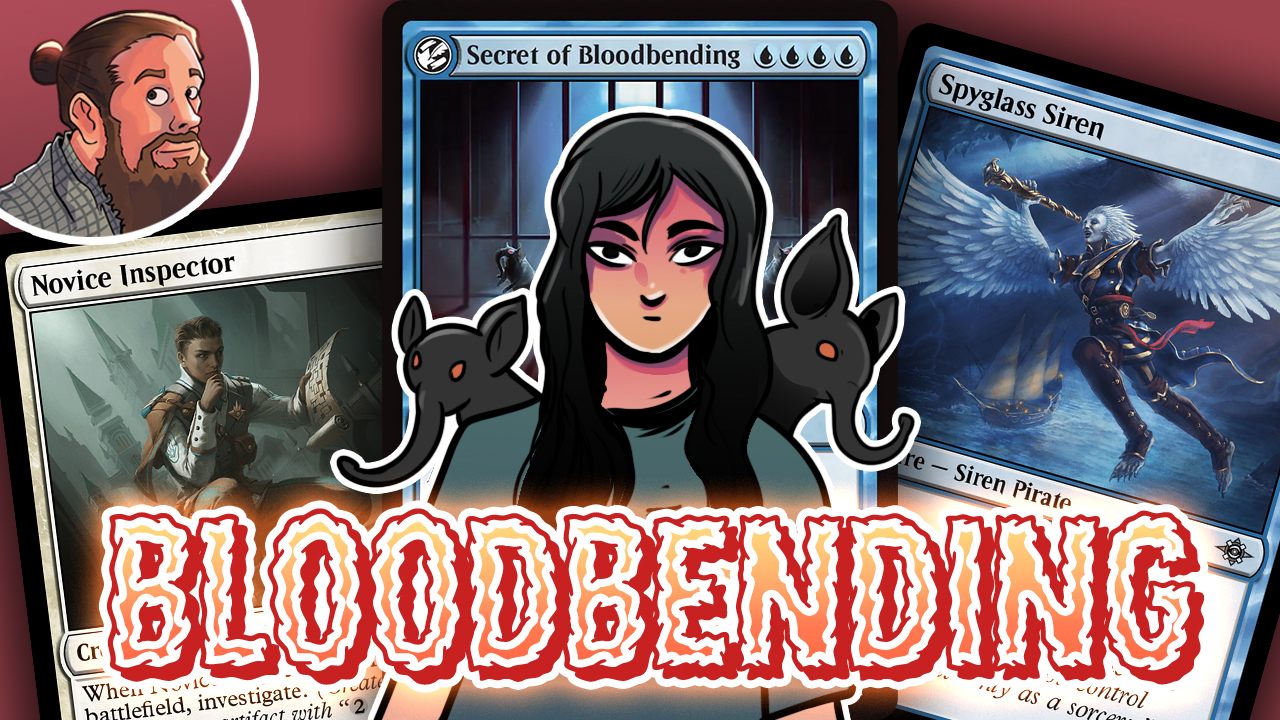Brewer's Minute: How Many Lands?
Hey, everyone. It's time for another Brewer's Minute. Last week on Much Abrew, we played an Enduring Ideal deck that was super sweet but also amazingly frustrating. The problem with the deck was pretty simple: it was skimping on land. As a result, we often found ourselves in a position where we had the win (in the form of Enduring Ideal) in hand but were a mana or two short of actually casting our game-winning spell.
This got me thinking about other decks we've played, and I realized that skimping on lands is one of the most common deck-building mistakes brewers make. This makes sense. I mean, when you are choosing between a sweet spell or creature and another boring old land, the nonland spell often seems like the right choice. However, over the course of time, being a land or two short leads to endless frustration. So, for our Brewer's Minute this week, we are going to talk about two things: first, how to calculate the right number of lands for your deck; then second, with the help of some real-world examples from Modern, some rules of thumb for adding lands to your deck!
Don't forget: if you enjoy the series (and haven't already), make sure to subscribe to the MTGGoldfish YouTube Channel!
Transcript
Note: I'm not sure I can do an actual transcript this week, because it won't make much sense without the video. Instead, this will be more of a summary of the concepts and important points.
First off, I should warn you that this example is fairly simplistic and there are plenty of exceptions to the rules we'll be talking about (think of decks like Belcher in Legacy that only play a single land). However, assuming that you're building a fairly typical deck, there is a really simple way of figuring out about how many lands you should put in your deck. Let's use Death's Shadow Aggro as an example:

The first think you do is to count up the total converted mana costs of all the nonland cards in your deck. Using the above Death's Shadow list as an example, you'd get something like this:

You probably noticed, looking at the numbers, that figuring out the converted mana cost of a card isn't always that straightforward. While the number written on the top right hand corner is the CMC as far as the game rules are concerned, for figuring out how many lands we need in a deck, what we are actually looking for is how much it will cost us to cast the card. For example, Become Immense technically has a CMC of six, but if you've ever played with or against Death's Shadow Aggro, you'll know that it is most often cast for one mana, so for the sake of our calculations, we count it as one CMC rather than six.
Once you have the total CMC of the nonland cards in your deck, the next step is to divide this number by the number of nonland cards in your deck. In the case of our Death's Shadow list, the deck is playing 43 nonlands, so we can divide 33 (the total CMC) by 43 (the number of nonlands) to find the average converted mana cost of the nonland cards in the deck. For Death's Shadow, the average converted mana cost is incredibly low (likely the lowest in all of Modern) at 0.76, meaning the average nonland card in the deck costs significantly less than one mana.
You'll also note that the Death's Shadow list is only playing 17 lands, which is on the extreme low end for "normal" decks. But, what about other decks? I'll save you the trouble of going through and calculating the average CMC for a bunch of different lists. Here's my breakdown of some common decks in Modern.
| Deck | Average Nonland CMC | Lands |
| Death's Shadow Aggro | 0.76 | 17 |
| Infect | 0.96 | 19 |
| Bogles | 1.19 | 19 |
| Naya Burn | 1.4 | 20 |
| BG Midrange | 1.97 | 23 |
| Jund | 2.0 | 23 |
| Jeskai Control | 2.5 | 25 |
| R/W Control | 2.57 | 25 |
As you can see, the pattern is pretty consistent. Of course, the above chart doesn't include all of the decks in Modern because decks like Tron (which have lands that tap for multiple mana) or decks with a lot of nonland mana sources (more on this in a minute) complicate the calculations. However, from the above information, we can get three simple rules of thumb.
- If the average nonland CMC of your deck is 1.5 or less, the starting point is 20 lands. As your average CMC ticks down toward 1 (or even less), you can drop more lands. It seems that, with an average CMC of about 1.0, you're probably best off running 19 lands, although there could be an argument for 18 in some builds. Seventeen lands is about the lowest you'll ever go in a "normal" deck, with 16 being the absolute floor.
- If the average nonland CMC of your deck is around 2.0, play 23 lands. This one is very consistent. If your average spell costs two mana, then 23 lands is the number. As your average nonland CMC climbs towards 2.25, go up to 24; as it drops towards 1.75, you can consider going down to 22.
- Once your average nonland CMC hits 2.5, you need AT LEAST 25 lands.
Of course, there are other factors at play. A Jeskai Control deck with Think Twice and Serum Visions can probably get away with playing slightly fewer lands than a R/W Control deck with no card advantage or filtering (which is why the R/W Control decks plays four copies of Simian Spirit Guide). Likewise, a deck like Death's Shadow Aggro that is extremely land-light can get away with playing fewer lands in part because it has 12 cards that cycle for free. However, these topics are a bit beyond our general rule of thumb, but maybe we'll discuss them in more depth in the future. However, I did want to talk a little bit about nonland mana to wrap things up. For this, let's use a Gr Devotion deck as an example:

The Gr Devotion list seems to fly in the face of everything we've been talking about. Its average nonland converted mana cost is extremely high at 3.19, but it only plays 21 lands! Based on our rule that with an average CMC of 2.5, you need at least 25 lands in your deck, I would estimate that the Gr Devotion list would want around 29 lands to function optimally. This leads us to another rule:
4. Count nonland mana sources (like Birds of Paradise and Mind Stone, et al.) as half of a land.
Now, let's go back to the Gr Devotion list. While it only has 21 lands, it has a massive 16 nonland mana producers, including Utopia Sprawl, Birds of Paradise, Arbor Elf, and Garruk Wildspeaker. If we count each of these as half of a land (because they function as lands but need at least one land on the battlefield to start working; plus, they are more fragile than lands), the land count in Gr Devotion rises all the way up to 29—exactly what we guessed it should be based on our research.
Another example of this is Skred Red, which has an average CMC of 2.56—almost exactly the same as Jeskai Control—but is only playing 23 lands. Based on our rules, the deck should have 25 lands. How does it manage to function without getting clunky? It has four copies of Mind Stone counting as two lands, which brings the land count up to a more realistic 25!
Anyway, enough examples. Let's wrap things up with a chart showing how many lands I believe you should play at each average nonland CMC. As I mentioned before, things are more complicated than this when you consider cantrips, card advantage, and such, but this should give you a good start for making sure you have the right number of lands in your deck.

One last rule on the way out the door: if you are ever on the fence as far as the number of lands you should play, you'll have more success if you play one land too many than one land too few. As such, if you are trying to decide between one final cool spell and one more land, pick the land—it will pay off in the long run!
Conclusion
Anyway, that's all for today. Hopefully, these guidelines will be helpful in your brewing! As always, leave your thoughts, ideas, opinions, and suggestions in the comments, and you can reach me on Twitter @SaffronOlive or at SaffronOlive@MTGGoldfish.com.













